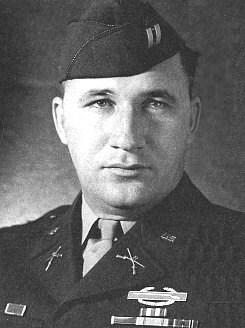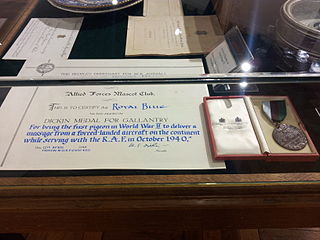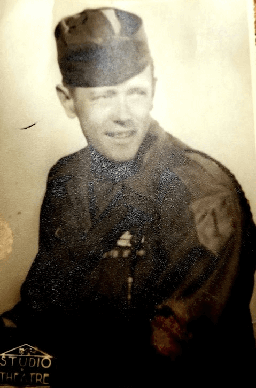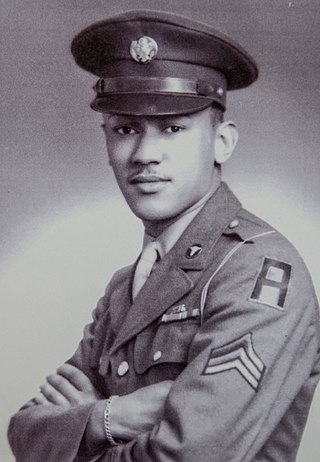Related Research Articles

The Normandy landings were the landing operations and associated airborne operations on Tuesday, 6 June 1944 of the Allied invasion of Normandy in Operation Overlord during World War II. Codenamed Operation Neptune and often referred to as D-Day, it is the largest seaborne invasion in history. The operation began the liberation of France, and the rest of Western Europe, and laid the foundations of the Allied victory on the Western Front.

Homing pigeons have long played an important role in war. Due to their homing ability, speed, and altitude, they were often used as military messengers. Carrier pigeons of the Racing Homer breed were used to carry messages in World War I and World War II, and 32 such pigeons were presented with the Dickin Medal. Medals such as the Croix de Guerre, awarded to Cher Ami, and the Dickin Medal awarded to the pigeons G.I. Joe and Paddy, amongst 32 others, have been awarded to pigeons for their services in saving human lives.

The PDSA Dickin Medal was instituted in 1943 in the United Kingdom by Maria Dickin to honour the work of animals in World War II. It is a bronze medallion, bearing the words "For Gallantry" and "We Also Serve" within a laurel wreath, carried on a ribbon of striped green, dark brown, and pale blue. It is awarded to animals that have displayed "conspicuous gallantry or devotion to duty while serving or associated with any branch of the Armed Forces or Civil Defence Units". The award is commonly referred to as "the animals' Victoria Cross".

Paddy was an Irish carrier pigeon awarded the Dickin Medal after being the fastest pigeon to arrive back in England with news of the success of the D-Day invasion, out of hundreds dispatched. He flew 230 miles (370 km) across the English Channel in four hours and fifty minutes, the fastest recorded crossing, and was awarded the medal on 1 September 1944, just under three months after the crossing. Paddy was trained by Andrew Hughes of Carnlough and is the only animal in Ireland to be awarded this medal.
William of Orange was a male war pigeon of British military intelligence service MI14. He was awarded the 21st Dickin Medal for delivering a message from the Arnhem Airborne Operation. This message saved more than 2000 soldiers at the time of the Battle of Arnhem in September 1944. His official name in military record is NPS.42.NS.15125. He received the Dickin Medal in May 1945.

Commando was a pigeon used in service with the British armed forces during the Second World War to carry crucial intelligence. The pigeon carried out more than ninety missions during the war, and received the Dickin Medal for three particularly notable missions in 1945. The medal was later sold at an auction for £9,200.
The National Pigeon Service (NPS) was a volunteer civilian organization formed in Britain in 1938 as result of representations made to the Committee of Imperial Defence and the British Government by Major W. H. Osman. During 1939-45 over 200,000 young pigeons were given to the services by the British pigeon breeders of the NPS. The birds were used by the Royal Air Force and the Army and Intelligence Services, Special Section of the Army Pigeon Service. During three and a half years of World War II, 16,554 war pigeons were parachuted onto the continent. One of these was Commando, a red chequer cock bird that became a recipient of the Dickin Medal. Many other NPS pigeons also received the Dickin Medal.

Leonard Treherne "Max" Schroeder Jr. was a colonel in the United States Army, who served on active duty from 1941 to 1971. As a captain during World War II, he commanded Company F of the 2nd Battalion, 8th Infantry Regiment, 4th Infantry Division in the Normandy Landings on June 6, 1944, landing on Utah beach in France. Leading the men of his company, Schroeder was the first American soldier to come ashore from a landing craft in the D-Day invasion.
White Vision, also known by her service number SURP.41.L.3089, was a female Second World War homing pigeon who served with the National Pigeon Service and was posted to No. 190 Squadron RAF. She was awarded the Dickin Medal for gallantry in 1943 for delivering a message from a flying boat forced to ditch off the coast of Scotland.
Winkie was a pigeon who won the Dickin Medal in 1943 for assisting in the rescue of an aircrew forced to ditch in the North Sea during the Second World War.

Royal Blue, also known as NURP.40.GVIS.453, was a male pigeon of the RAF pigeon service. He was awarded the Dickin Medal for bravery in March 1945 for being the first pigeon to deliver a message from an allied forced landed aircraft from the European mainland during World War II. He had originally been housed at the Royal Lofts at Sandringham, and was owned by King George VI.
Tyke, also known as 'George' and carrying the service number 1263 MEPS 43, was a male Second World War homing pigeon who was awarded the Dickin Medal for gallantry in 1943 for delivering a message from a downed aircrew. His medal was sold for £4,830 ($7,313) in July 2000.
Beach Comber was a Canadian war pigeon who received the Dickin Medal for bravery in service during the Second World War.
Scotch Lass was a carrier pigeon who received the Dickin Medal in June 1945 from the People's Dispensary for Sick Animals for bravery in service during the Second World War. She accompanied a British agent on a mission into The Netherlands. Immediately after she was released, in September 1944, and still in view of the agent that had released her, she hit telegraph wires. However, she carried on and delivered her message and photographs.
Cologne was a pigeon who received the Dickin Medal in 1947 from the People's Dispensary for Sick Animals for bravery in service during the Second World War.
Duke of Normandy was a pigeon who received the Dickin Medal in 1947 from the People's Dispensary for Sick Animals for bravery in service during the Second World War. Duke of Normandy was the first bird to arrive back with a message from the paratroops of 21st Army Group on D-Day after the capture of a gun battery at Merville.
NURP.43.CC.1418 was a pigeon who received the Dickin Medal in 1947 from the People's Dispensary for Sick Animals for bravery in service during the Second World War. NURP.43 received the citation for the fastest flight carrying a message from the 6th Airborne Division from Normandy on 7 June 1944, while serving with the National Pigeon Service.

John McHugh Sr. was an American World War II veteran who participated in the D Day invasion, the Battle of Normandy and the Battle of the Bulge. He was in the 1st Infantry Division and was awarded the Silver Star and Bronze Star. The State of New York placed him in its Veterans Hall of Fame. His hometown Whitestone, New York has co-named a street after him.

Waverly Bernard Woodson Jr. was an American staff sergeant and medical professional. He is best known for his heroic actions as a combat medic during the Battle of Normandy in World War II.
References
- 1 2 3 4 5 6 7 "Hero pigeon's WWII medal on show". BBC News. 1 June 2005.
- ↑ "Pigeons During the Two World Wars". Faircount Pigeons & Dove Count. Retrieved 22 June 2011.
- ↑ Malvern, Jack (27 March 2004). "War hero pigeon earns his wings 60 years on". The Times.
- 1 2 "Reporting the War". BBC Radio Ulster. Retrieved 22 June 2011.
- 1 2 3 4 5 "Vital role of Gustav the pigeon". Northern Echo. 2 June 2004.
- ↑ "D-Day Timeline". Royal Air Force. Archived from the original on 9 December 2010. Retrieved 22 June 2011.
- ↑ "D–Day Fliers Decorated". British Pathe. Retrieved 22 June 2011.
- ↑ "Hero pigeon's WWII medal on show". BBC News. 2005-06-01. Retrieved 2020-06-15.